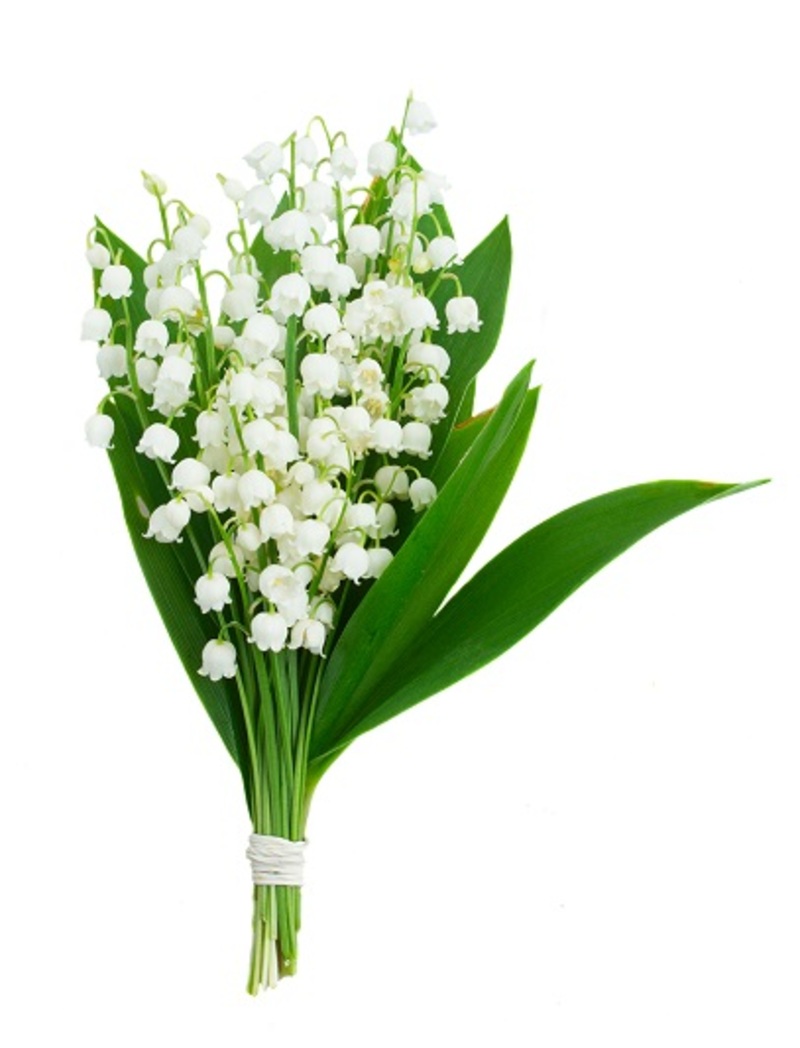Unveil 3 approachable techniques to extend flower freshness
Posted on 13/08/2025
Unveil 3 Approachable Techniques to Extend Flower Freshness
Fresh flowers have an undeniable power to brighten up any space, add elegance to celebrations, and infuse our lives with beauty. However, as glorious as they are, cut flowers often wilt much faster than we'd like. If you've ever wondered how to preserve flower freshness or searched for effective techniques to extend the shelf life of flowers, you're in the right place. In this comprehensive guide, we unveil three simple and approachable techniques to keep your flowers fresh for longer. Whether you buy bouquets regularly or enjoy picking blossoms from your garden, discover practical and science-backed methods that help prolong flower lifespan.
Why Flower Freshness Matters
Before we dive into the actionable techniques, let's briefly discuss why maintaining flower freshness is important for both aesthetic and practical reasons. Fresh flowers not only enhance the beauty of your environment but also uplift your mood, symbolize care, and convey emotions gracefully. Preserving their freshness ensures you get the most value from your arrangements, avoid waste, and enjoy vibrant, cheerful blooms for as long as possible.

Understanding What Causes Flowers to Wilt
To keep cut flowers fresh, it's useful to understand the main factors responsible for their wilting:
- Dehydration: When flowers lose water, their stems and petals droop quickly.
- Bacteria Growth: Dirty vases or water accelerate bacterial growth, which blocks the stem's ability to absorb water.
- Ethylene Gas: Some fruits and dying flowers emit ethylene, causing premature aging in flowers.
- Incorrect Temperature: Too much warmth or direct sunlight can cause rapid fading.
Approachable Techniques to Extend Flower Freshness
Technique 1: Prepare and Condition Your Flowers Properly
The first and perhaps most crucial step in ensuring long-lasting flower freshness involves proper preparation and conditioning as soon as the flowers enter your home. Here's how this technique helps to extend floral life:
- Trim Stems at a 45-degree Angle: Upon receiving or buying fresh flowers, use sharp scissors or a floral knife to trim 1-2 inches off the bottom of each stem at a 45-degree angle. This opens up a larger surface area for water uptake and prevents stems from sealing against the vase bottom. Repeat trimming every few days to maximize water absorption.
- Remove Lower Leaves: Any leaves submerged in water decay quickly, becoming breeding grounds for bacteria. Strip off any foliage that will sit below the waterline before placing your flowers in a vase.
- Use Clean Vases: Hygiene is paramount. Wash your vase with hot, soapy water and rinse well. Even invisible residues from last week's bouquet can harbor bacteria that will shorten the life of new flowers.
- Choose Appropriate Water Temperature: Most flowers prefer fresh, room-temperature water. However, bulb flowers like tulips or daffodils may benefit from cooler water. Research your specific blooms for optimal results.
- Hydrate Immediately: Never leave cut stems out to air-dry, as this can create blockages in the water uptake system. Place prepared stems into water as soon as possible.
By dedicating just a few extra minutes to conditioning your flowers properly, you form the foundation for extended bloom time.
Technique 2: Feed Your Flowers with Homemade or Commercial Flower Food
Cut flowers need more than just water to maintain their vigor and visual appeal. The second technique to keep flowers looking fresh is to use floral preservatives--either store-bought or DIY recipes. Here's how this step prolongs flower freshness:
- Store-bought Flower Food: Lead florists and supermarkets usually provide small packets of flower food with bouquets. These sachets contain a blend of sugar, acid, and biocides that nourish stems, improve water absorption, and drastically reduce bacterial growth. Always follow packaging directions and use the correct proportions for best results.
- DIY Flower Food Recipes: If you run out of store-bought options, you can easily make your own. Here's a simple homemade solution:
- Mix 1 quart of lukewarm water
- Add 2 tablespoons lemon juice
- 1 tablespoon sugar
- 1/2 teaspoon household bleach
The sugar acts as food for the flowers, lemon juice balances the pH, and bleach keeps bacteria at bay. Change the water and replace the mixture every couple of days.
- Avoid Overfeeding: Don't use extra flower food in hopes of longer life; too much sugar or bleach can do more harm than good.
- Keep Water Fresh: Regularly change the water, rinse the vase, and re-cut stems every 2-3 days for maximum effect. Clean water is vital in extending the freshness of cut flowers.
Applying plant food keeps blossoms vibrant, slows bacterial growth, and gives your arrangement the nutrients it needs to thrive.
Technique 3: Optimize Environmental Conditions
Once your flowers are trimmed, fed, and placed in a clean vase, environmental factors play a huge role in how long they stay fresh. Here's how to create the ideal surroundings for your blooms:
- Position Flowers Correctly: Always place your arrangements in a cool area, away from direct sunlight, heat sources, and appliances like televisions or radiators. Excess warmth speeds up wilting and water evaporation.
- Avoid Fruit Bowls: As elegant as it looks to display flowers and fruit together, fruits such as apples, bananas, and avocados emit ethylene gas, which accelerates petal shedding and flower aging. Keep your vases and fruit bowls far apart!
- Minimize Drafts: Exposure to constant airflow, air conditioning, or heating vents can hasten dehydration. Choose a spot with still air circulation whenever possible.
- Nighttime Chill: For an extra boost, some flower enthusiasts recommend moving vases to a cooler room or even the fridge (if there's space and no fresh produce) overnight. Most flowers enjoy temperatures between 35 to 50?F (2 to 10?C) and will last longer with this nightly routine.
- Remove Wilting Stems Promptly: As soon as any stems start drooping or discoloring, remove them from the vase. Wilting blooms release gases and bacteria that rapidly degrade the rest of the arrangement.
Controlling light, temperature, humidity, and ethylene exposure are easy, effective ways to prolong the freshness of your flowers.
Additional Tips to Keep Flowers Fresh for Longer
In addition to these three main techniques, try incorporating these bonus tips for ultimate longevity:
- Choose Hardier Flowers: Some flowers, like carnations, chrysanthemums, and alstroemerias, naturally have a longer vase life. Consider mixing these robust blooms with more delicate varieties.
- Avoid Crowding Stems: Overstuffing a vase inhibits air and water circulation, leading to faster decay. Ensure each stem has enough space.
- Remove Excessive Petals: Outer petals, especially on roses (called guard petals), can be removed to keep the flower looking fresh.
- Use Floral Sprays: Lightly misting your bouquet with water every day can add moisture to the petals and leaves, keeping them perky.
- Handle with Care: Always use clean hands and tools when touching or arranging your flowers to minimize microbial contamination.
Common Myths and Mistakes in Flower Preservation
There are many pieces of traditional advice on extending cut flower life, but not all are scientifically sound. Let's clear up some common misconceptions:
- Placing a penny in the vase: Pennies were once said to provide copper, an antimicrobial agent, but modern coins rarely contain enough usable copper to make a difference.
- Using aspirin: While aspirin alters water pH, it doesn't significantly slow bacterial growth compared to commercial flower food or a bit of bleach.
- Additive overuse: Too much bleach, vinegar, or sugar can be harmful--and risky for delicate stems.
- Neglecting regular water changes: The single most crucial habit is changing and cleaning the water, which many neglect.

Recap: Your Go-To Guide for Extending Flower Freshness
-
Proper Preparation & Conditioning:
Trim stems, remove underwater leaves, use clean vases, and hydrate immediately for the healthiest foundation.
-
Flower Food for Nourishment & Protection:
Feed flowers with commercial or homemade flower food, and refresh water every few days to block bacteria and supply essential nutrients.
-
Optimal Environment:
Keep blooms away from heat and ethylene gas, minimize drafts, consider cool nighttime temperatures, and remove wilting stems at once.
Frequently Asked Questions about Flower Freshness
- How often should I change the water in my flower vase?
It's best to change the water and re-trim stems every 2-3 days for optimal freshness. - Can I use refrigerator storage for all flower types?
Most flowers benefit from cool storage overnight, but avoid refrigeration for tropical flowers such as orchids or anthuriums, which prefer warmer conditions. - Is bleach safe for flowers?
Yes, in small amounts. Add only a drop or two per quart of water to inhibit bacterial growth; higher amounts may harm the flowers. - What's the best temperature to keep flowers fresh?
Generally, cut flowers will last longer between 35-50?F (2-10?C), but keep them out of freezing conditions. Daytime room temperature (65-72?F) is usually fine if other factors are managed.
Conclusion: Enjoy Longer Lasting Flowers with These Simple Tips
To extend the freshness of your flowers is not just about enjoying their beauty for longer--it's also an act of mindfulness and care that pays back in color, fragrance, and cheer. By preparing your flowers properly, feeding them wisely with the right nutrients, and optimizing their surroundings, you transform every bouquet from short-lived to stunningly resilient.
Let these approachable techniques for flower freshness become part of your flower care routine, and witness nature's magic flourish in your home week after week!







